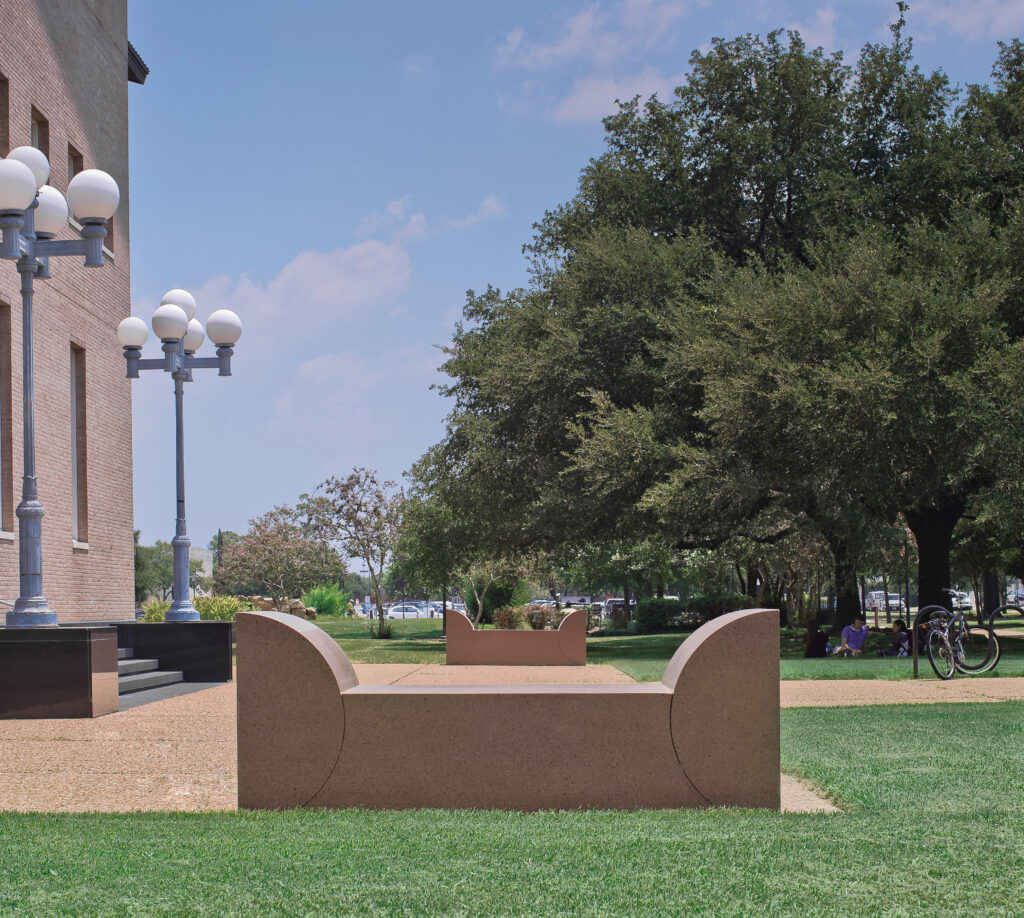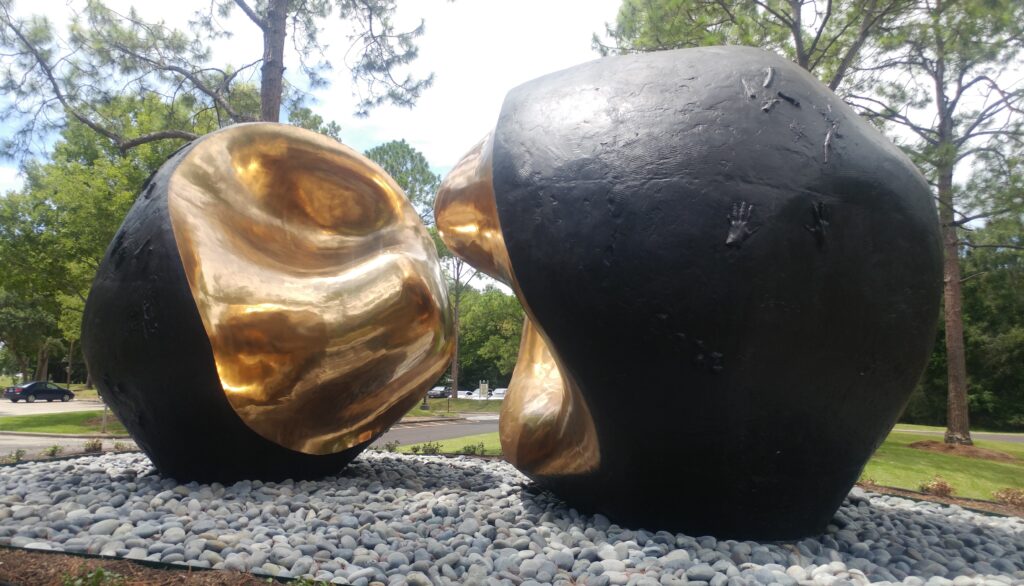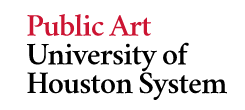By Mercedes Del Riego

Every day, University of Houston (UH) students sit on the two granite benches in front of the Gerald D. Hines College of Architecture and Design building completely unaware they are resting on a sculpture created by Scott Burton in 1985. This artwork is one of the nearly 700 pieces in the Public Art of the University of Houston System’s (Public Art UHS) collection that are found at the University of Houston, its satellite campus in Sugar Land, as well as throughout the remaining UH System universities: the University of Houston-Downtown, the University of Houston-Clear Lake, and the University of Houston-Victoria.

UH became a public institution in 1963, a period when the city was experiencing tremendous growth. At the same time, a group composed of Aaron Joseph Farfel, who was an investor and philanthropist on the Board of Regents, UH President Philip G. Hoffman, and art history professor Dr. Peter Guenther made the case for bringing the best con-temporary art to the university for the public’s enjoyment. In 1966, the UH Board of Regents agreed with this group and voted to dedicate one percent of new construction budgets to acquiring art for the university. Guenther, seen as a passionate visionary who could provide the historical perspective for the public art that the campus sorely needed, became director of the Public Art Acquisition Committee in 1969.

Peter Guenther’s father, Alfred Otto Hugo Günther, was born in Dresden, Germany, in 1885. He was an expressionist poet and a prolific journalist in Germany from 1913 until the Nazis categorized him as “jüdisch versippt,” indicating he was married to a Jewish woman. In 1936 the Gestapo banned Alfred Günther from writing and publishing. Well known within the worlds of German expressionism and the Bauhaus, Günther was a close friend of famous Bauhaus sculptor Gerhard Marcks.
Alfred had “very good anti-Nazi credentials, and both [father and son] were very literate and highly attuned to the principles of democracy,” according to historian Irene Guenther, Peter’s daughter and history professor in the UH Honors College. These credentials helped Alfred become an approved publisher and writer in the American occupation zone of post-war Germany, while Peter eventually gained American citizenship through a State Department program that assimilated educated Germans into the United States to enhance American-German relations following World War II.
Peter Guenther moved his family of six from Stuttgart, Germany, to San Antonio, Texas, where he worked at a lumber company because the records proving he had earned his doctorate in Germany had been destroyed. After receiving an M.A. and while completing his Ph.D. at The University of Texas, he taught art history at the Witte Museum and, then, in a full-time position at St. Mary’s University in San Antonio. President Philip Hoffman appointed Guenther as assistant professor of art history at the University of Houston in 1962 at the age of forty-two.
To read the full article, click here to read the pdf or on Buy Magazines above to purchase a print copy or subscribe.
Browse Public Art UHS’s permanent collections, exhibits, and galleries
Public Art UHS Celebrated its fiftieth anniversary in 2019. Watch the video to learn more about this unique program and how it has grown as a service to community as well as the UH system.


 Follow
Follow